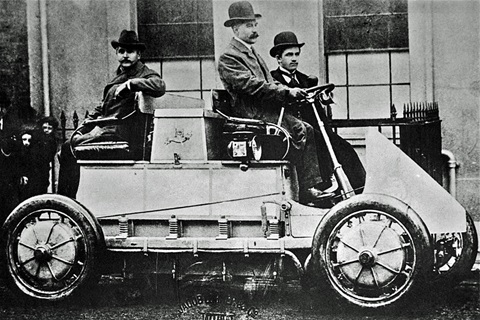Electric car racing technique theory:
Background:
1. There has always been [since the desire to use electric motor technology in cars] a problem of battery weight, battery amp output and duration. [No coincidental irony intended] {Lohner-Porsche 1900} and because of [the Easy Win] the development of the small internal combustion engine, outperforming an electric battery, motor, set up with ease, at the time. Sparks igniting a paraffin type won the wheel turning job. Until recently when battery amp output with reduced weight has arrived. The continuing main drawback issue remains, longevity of power output.
2. I remember using a golf cart [1990] for some hours. It had required engine torque and max speed which was reasonable for carry weight at max approximately 15mph. During my hours [and with some off fairway fun] it never lost torque. I remember [1985] getting a go on a heavy lifting electric forklift. On full charge it could last 1.5 days of near continuous work. When its power was low, it lost its heavy capability, slowly like a wheezing old man being asked to run with a suitcase. Shortly after [dependant of amp flow demand] it could only lift low weights and then, ran slower up the isles and then [all at once] started creeping to a stop and died.
3. On fifth gear, back when the cheating evil fucking rude arsehole of a bosh, Michael Cobbler had not received his sentence of suffering [no irony missed] a woman was sent to interview him after [a task] a female racing driver that turned into a squealing sycophant and asked him his favorite colour! The task was to see who could drive a small highly efficient go-cart the furthest on 1litre of fuel. It was a challenge that the German racing driver was attracted to and won. With a combustion engine, accelerating with minimum fuel feed, saves fuel over distance. The hill-bosh also switched off his engine on decent track lengths, unlike his Ferrari colleague & competitor.
Summary:
The challenge with electric racing and winning is, the fifth gear challenge, under the remaining predominant limitation of inboard electric car propulsion. That is to say that if all cars were to launch off the grid at full zap and head for the finish line at full zapping, it would be marginal dice rolling of full amp output second differences that would determine the winning car, based on battery to range. average race battery termination. If the cars had a range surplus to race range, the redundancy would allow for pure driver aggression and skill advantage [if the race was 20 laps and the designed range was 60 laps] But if the designed range was 21 laps, give or take 2 laps, of a 20 lap race then amp demand planning & skill could most likely cross the winning line ahead of any remaining wheezing men/sycophant females or whatever.]
Test Plan: 1. Demand to Test your car on a full charge, flat out, on full power as often and as long as possible and see where [on lap] you terminate on your last lap number. 2. Test two [next day at least] take your car on a new full charge and re-do your lap range number to termination point using half foot accelerator torque only. This knowledge will give you the truth and guide for your race power delivery, range optimum to leave you a good final blast, Steve Ovett / Cram style finish. Good Luck..
